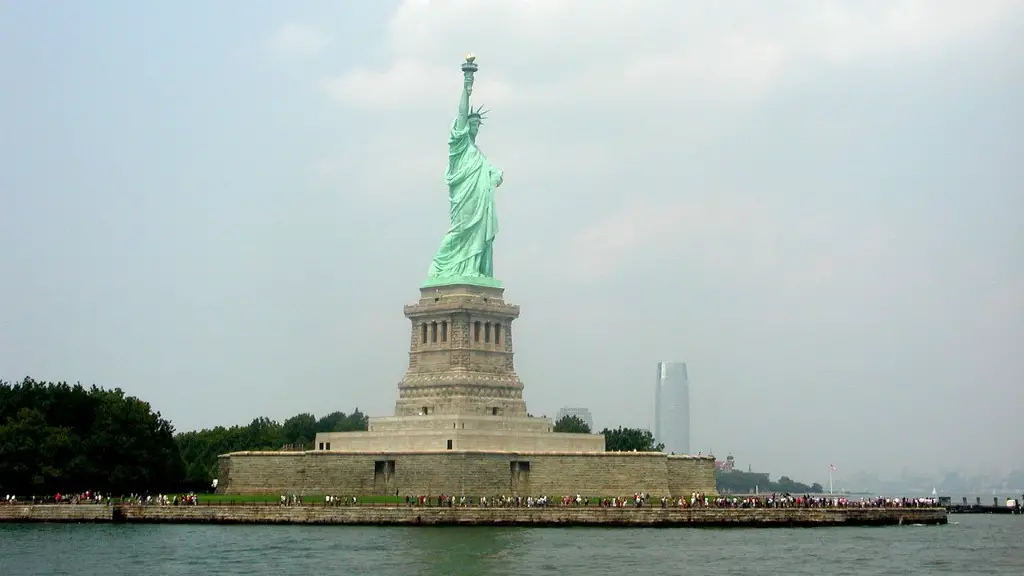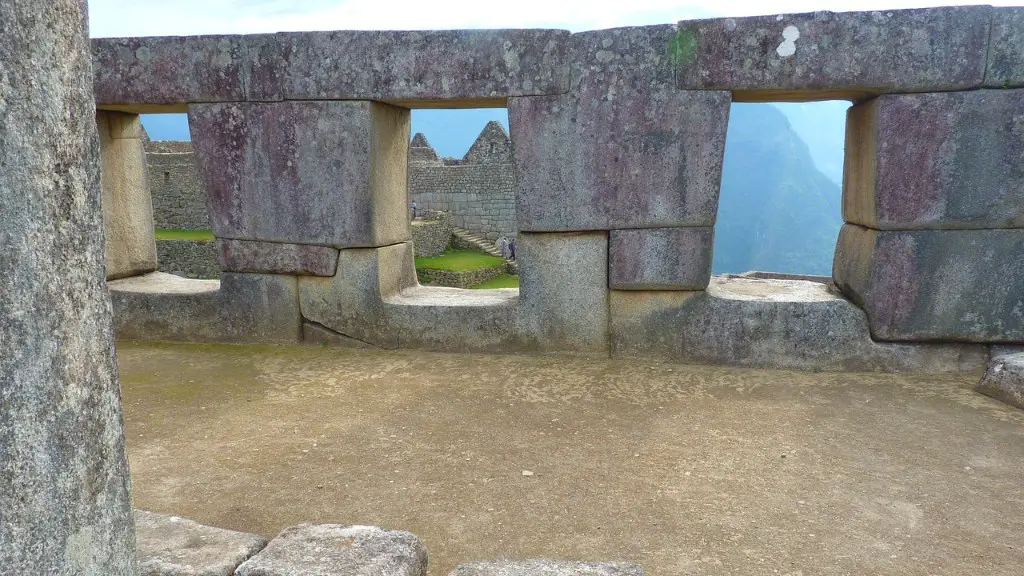Kilimanjaro is one of the most iconic climbs in the world and is a bucket list item for almost anyone who loves trekking and adventure. But how much time is truly needed to climb this beautiful mountain?
The answer to this question largely depends on the route taken, the level of fitness of the climber and the overall objectives of the expedition. Those looking to take on the summit should expect to plan for between 6-9 days in order to reach their goal.
Most summit expeditions begin in the town of Moshi, Tanzania at the base of the mountain. From here, climbers first seek to reach the first camp – Mandara Hut – which typically takes between 3-4 hours of trekking and can be done as part of an easy day hiking. After arriving at the hut, the second camp – Horombo Hut – can be reached by trekking a further 5-7 hours.
At this point, many climbers will take an additional rest day in order to acclimatize to the altitude and the terrain. Climbing at this altitude is no small feat and those who do not allow for sufficient time to rest and acclimatize themselves may risk their health or even their life.
Once the rest day is complete, the much longer and more challenging hike to Kibo Hut begins. This camp is located at the base of Kilimanjaro’s scree slope and is a key point in the expedition as climbers prepare for the final ascent to the summit. Trekking time along the base of the mountain can take 6-8 hours.
Once at Kibo Hut, climbers make their final preparations for the summit and then begin the ascent in the early morning hours – typically 6 pm or so. The summit can be reached within an estimated 6-7 hours, depending on weather conditions and other factors.
Once on top of the mountain, climbers typically spend an hour or so enjoying the scenery and elation of reaching the summit before beginning their descent. Due to the altitude of the mountain, the descent may take as long as 8-10 hours, depending on how quickly and carefully the trekkers move.
Finally, most climbers arrive back at the base of Kilimanjaro several days after having left, tired and exhilarated for the experience.
Climb Prep
In order to ensure a successful summit of Kilimanjaro, it is essential to ensure that the climber is properly prepared for the expedition. A basic level of fitness is necessary to complete the climb and many routes provide specific exercise and training regimens to ensure that hikers are as prepared as possible.
It is also important to have the appropriate gear for the expedition. Depending on the season and the route taken, essential items such as good quality walking boots and rain protection can mean the difference between a successful and an unsuccessful summit.
Furthermore, it is important to have a basic knowledge of the geography of Kilimanjaro and the surrounding area. It is advisable to explore the various resources available in order to become familiar with the terrain and the ecosystems that comprise the mountain and its environs.
Finally, it is important to pack additional food, water and emergency supplies that can be used in case of an emergency or long delay. While the route is well established, Mother Nature can sometimes make her presence known that can extend the duration of a climb or even prevent a successful summit attempt.
Altitude Considerations
The altitude challenge of Kilimanjaro should not be forgotten when preparing for the climb. Although the mountain is the highest in Africa, it is not the most difficult of climbs in terms of technicality. However, altitude sickness can still be a serious danger even at this height and good acclimatization is essential.
A slow ascent is recommended in order to give the body time to adjust to the decline in air pressure and oxygen available at higher elevations. A series of breaks should also be taken in order to rest and relax the body.
It is important to monitor the health of climbers and watch out for the signs of altitude sickness. Inclination to vomit, lack of appetite and exhaustion are common symptoms that can indicate a worsening condition. If experienced, immediate steps should be taken to descend in order to avoid serious health risks.
Weather conditions on Kilimanjaro can also be unpredictable and it is important to be aware of the forecasts prior to departure as well as during the trek. A sudden snow storm can prove to be extremely dangerous and it is advised to be vigilant of the weather and appropriately adapt the expedition accordingly.
Altitude Adjustable
One of the benefits of Kilimanjaro is that the altitude of the peak is low enough where a gradual approach can be taken. This allows for a slower ascent than might be expected on higher mountains so that proper acclimatization can be achieved.
Therefore, the climbing of a mountain less than fifty-six hundred or so meters high is usually achievable in the span of 6 to 9 days. This is much shorter than is needed for some other mountain treks, such as those of the Himalayas.
This shorter timeline means that fewer days spent on the slopes means far less pressure on the body. Climbers don’t need to suffer from the extreme height-related fatigue that can be experienced on far higher peaks.
Furthermore, it also means that climbers can more effectively plan their treks. Knowing exactly how long it will take to complete the summit makes planning both the pre-climb logistics and post-climb celebrations that much easier.
In addition, it also means that destination climbers have a much greater chance of reaching their destination without too much difficulty. A straightforward climb of Kilimanjaro is much more achievable than a much more technical climb of much higher mountains.
Environmental Considerations
Finally, it should also be noted that Kilimanjaro is a natural mountain and making the journey to the summit needs to be done with a great amount of respect for the environment. This means that climbers should avoid leaving litter and making unnecessary noise during their treks.
In addition, those traveling in organized groups should be aware of their level of impact on the environment. Large numbers of tourists can have a disruptive effect on the local animal and plant life.
Therefore, it is advisable that climbers follow basic rules in order to ensure that their impact is as minimal as possible. Simple steps such as being aware of the local flora and fauna and using the minimal amount of equipment and fuel can prevent potential damage.
Furthermore, those staying in the mountain lodges should also respect the resident staff and their local customs. Good relations with the locals can help ensure that future happiness and prosperity is possible in this mountainous region.
Equipment Considerations
In order to ensure a successful summit of Kilimanjaro, it is essential to be equipped with the correct gear and equipment for the expedition. This can range from items such as good quality walking boots, waterproofs and a variety of other pieces of clothing and equipment needed for the cold temperatures and wet weather that is common at high altitudes.
In addition to these items, it is also important to bring an adequate amount of food and water in order to sustain the climber during the summit attempt. As the trek is a considerable distance and the environment at altitude can be draining on the body, having extra supplies such as snacks and emergency supplies can be vital.
Finally, it is necessary to be equipped with a first aid kit that contains all the necessary medical supplies and items needed to help climbers at altitude. The aid kit should contain items such as bandages, painkillers, antiseptics and emergency contact details for emergency services.
Group Dynamics
In a group situation, it is important to make sure that each climber is aware of their teammates during the climb. This means that regular check-ins should be performed to ensure that everyone is healthy and safe. Safety first is the motto that should be adhered to by all those involved in the expedition.
It is also important to ensure that all members of the group are treated in a respectful and kindly manner. This includes that they are adequately fed, rested and looked after during the expedition. Each climber should be given the attention they need in order to have the best chance of success.
In addition, it is also important to bear in mind any language/cultural barriers between the members of the team. This is particularly important when making decisions and reaching compromises. It is essential that each member feels comfortable and like their opinion is both valued and listened to with respect.
Group dynamics play a huge role in the success of any climb and understanding the effect of each individual is essential to ensure that the whole team brings each other up to the summit together.


